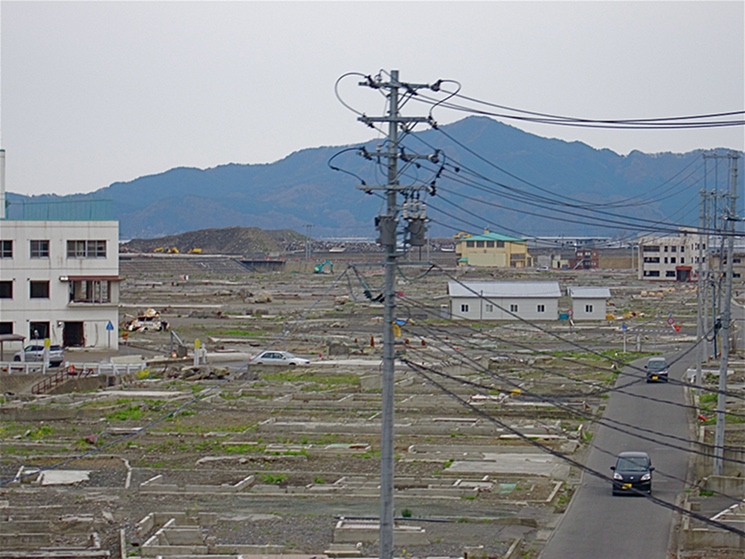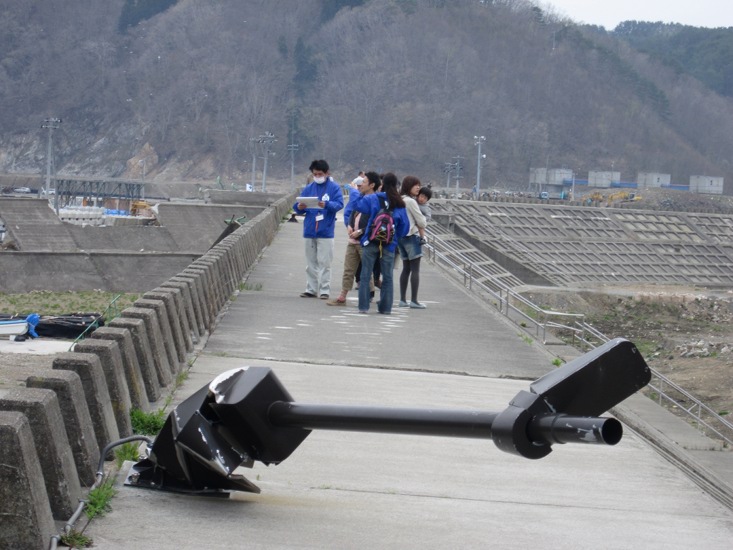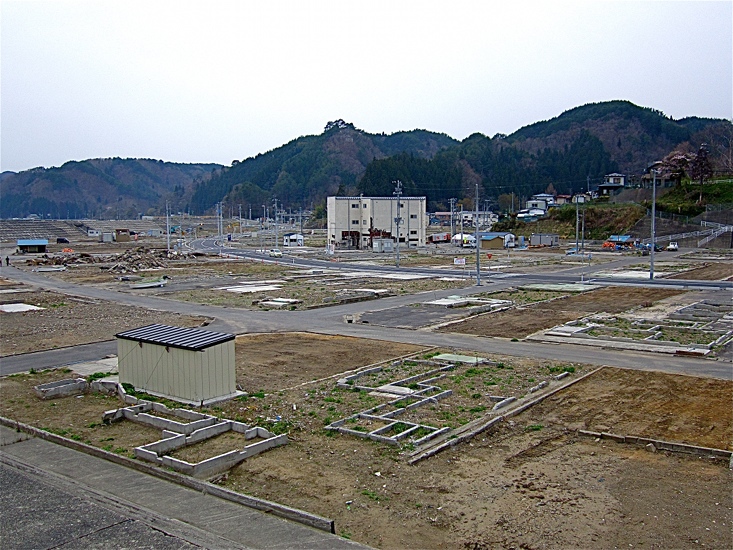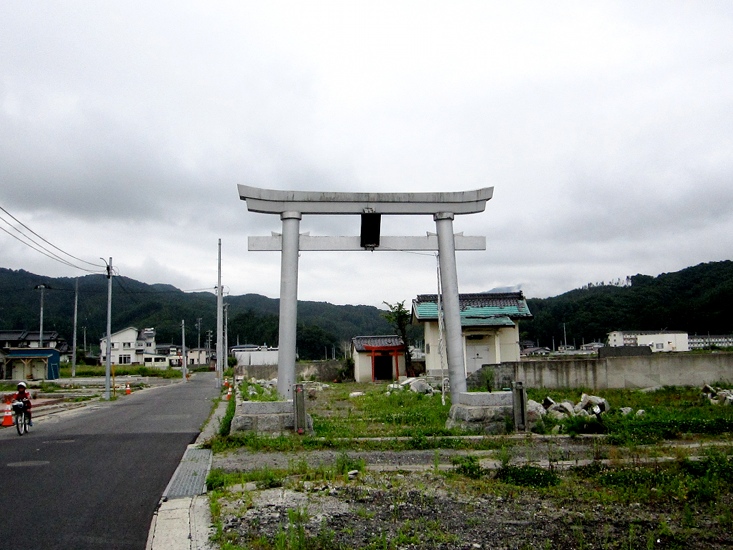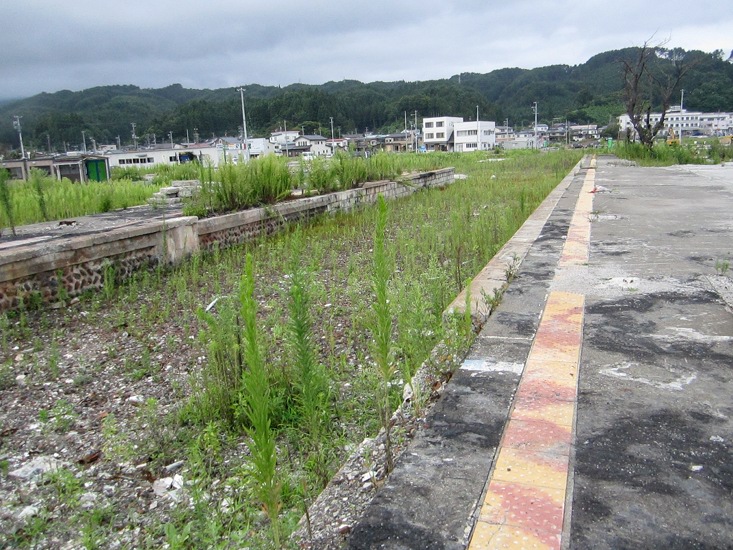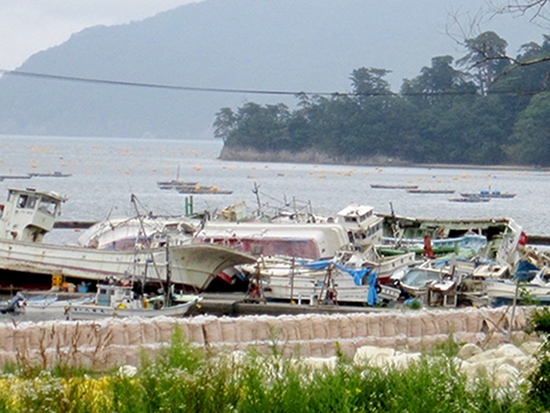Otsuchi town, what's left of it, Iwate Prefecture.
The tides have been against cities along Japan's earthquake coast long enough. The two year anniversary of the terrible March 11th quake and tsunami is upon us and the north wants, needs visitors -- even if its only to see just how hard Mother Nature can hit.
Iwate Prefecture's tsunami zone is open to adventurous travelers. Buses and trains are running (a little slowly, but running) and access is not difficult from Tokyo. Two days with an overnight can take you from Tokyo into the heart of the earthquake coast. And they really want you to come. Tourists mean tourist dollars.
Japanese tour companies began running overnight trips (for Japanese) to Iwate and Miyagi prefectures a year ago with the cooperation (and blessing) of local governments. Most are by bus and include a presentation and talk about 'that day' from local residents. Taro Port has even run a regular tour of the legendary sea wall that came crashing down so horrifically.
Japanese tour group on the remains of the wall in Taro last spring
Make Morioka your starting point. The city is easy to reach by Shinkansen and has plenty of low-cost business hotels around the station -- plus the area is awash in hot springs. A sample itinerary could include Taro Port in Miyako City, Otsuch and Kamaishi. These towns are more or less in a line along the coast.
Taro Port. Miyako City sustained little damage except around the steep port area. It's a good place to stop overnight if you need to. Aside from the world-record-breaking tsunami wall -- now gone -- the town is famous for beautiful Jodogahama Beach, just around the headland from the port. Most of the flotsam and jetsam from the tsunami has been cleared away making this is a good side trip in warm weather. The bus to the beach passes one of the not-so-stunning housing projects for the many displaced residents of nearby Taro if you're interested.
From Miyako Station, board the San Riku railway for the twelve kilometer trip to Taro Port. Trains run at random hours since most of the line was washed away, so check the timetable posted by the platform entrance. Buses to Taro leave more often. Go to Bus Stop 1 in front of the station.
However you arrive, you can't miss the mountains of wreckage cleared from Taro's tidal flats and the flocks of seagulls that have gleefully settled there. Cross the street and walk the ramparts of the remaining sea wall for a birds-eye view of the tsunami zone.
In a recent Taro city poll, 45 percent of its 4400 residents were not interested in remaining. You can hardly blame them.
Taro from the 'safe side' of the wall.
Compared to two years ago, a little progress has been made. Some purely cosmetic. The torn and twisted stair rails and lamp posts that used to line the second barrier wall have all been cut down. Which actually makes it more precarious to climb rather than less.
A cluster of small warehouses and sheds are back in place along the rocky shore, though much of the area on the seaward side of the wall remains nothing but a tumble of broken concrete.
If you visit in summer, waist-high weeds cover the rubble of the vast, abandoned residential zone so it almost seems like a park.
Almost.
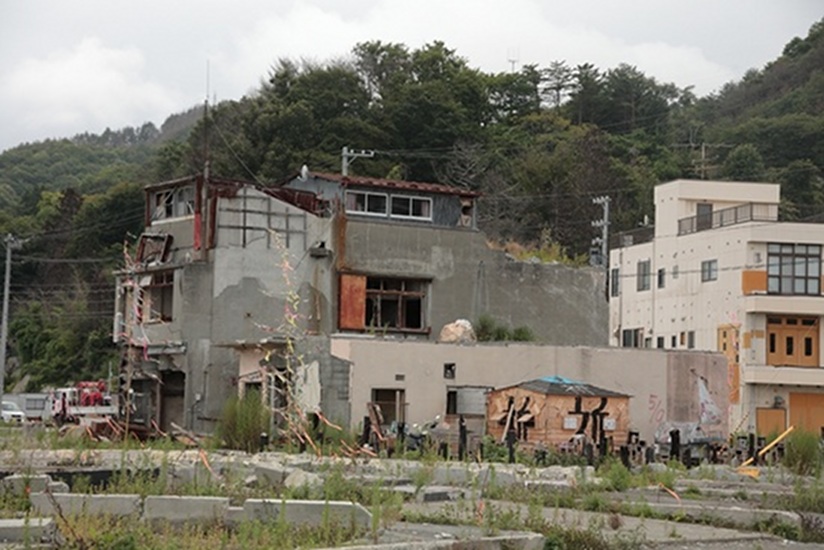
Ruins in Otsuchi, courtesy Mike Nakada
Otsuchi would love to welcome overnight visitors - if it had anything left to welcome them to. Otsuchi had some of the most far reaching damage of these coastal towns. The city was built on low, tidal flats and it literally just washed away. Block after block. Nothing left except dirt and concrete foundations. Ironically the sign for Otsuchi train station is still standing, pointing the way to a pile of cracked concrete. Nearby, the torii gate for what was the local shrine stands stoically alone.
Otsuchi torii, courtesy Mike Nakada
A scattering of little prefabs have gone up here and there on the tidal flats, locals trying to bring their businesses back. The question is, to who?
Otsuchi Station, courtesy Mike Nakada
Other areas had a higher loss of life, but here, the city is just gone. You can walk for blocks hearing nothing but the cry of the gulls and the distant buzz of cars on the bypass. The only way in and out is bus or car, so keep an eye on the time. If you miss your ride, you are in trouble.
Kamaishi is both a steel town and a fishing port. Arriving at the station, it looks like any other rural Japanese city. Taxis lined up along the curb, a small shopping center and modern supermarket nearby. The main mill, built on high ground like the station, just a stone's throw away. The port - and a completely different perspective on Kamaishi - is only a few minutes walk.
Kamaishi near the port.
Come out of the station and go to the left. There's an underpass beneath the train tracks. Follow the sidewalk down and around. Keep walking. The lowlands around the port are where the worst of the wave hit. Deserted, ravaged. The few buildings that were able to withstand the onslaught of the wave carry gaping holes, the metal twisted and rusting. Even in two years little has been done to clear away the wreckage. Mostly because no one had flood insurance.
One of the first things that strikes visitors in the tsunami zone is the absence of sound. Occasional cars motor through - roads are completely clear - but no one and nothing else. A true ghost town.
Keep the sharp rise of hills on your left, and you'll see the tsunami refuge area where survivors took the videos that played endlessly on the news. Allow about two or three hours for a stopover. Wear sturdy, comfortable shoes. Remember, you've got to walk back to the station. There are few taxis out here in the zone.
Depending on how you structure your itinerary, it is possible to spend the night in Kamaishi. The Sunroute Hotel is open for business.
Japan's earthquake coast is not all doom and gloom. Well, except maybe for Fukushima and its lingering radiation worries. Iwate's coastal seaweed, kelp and scallop farms are back in business, the lattice work of their beds rising and falling in the waves. (The current flows south from here; Fukushima and it's contamination far below.)
Beyond the jumble of wrecked boats, the kelp/seaweed beds are back.
A number of city's are still trying to figure out what to do with the wastelands left by the killer waves. There is opposition -- obviously -- to rebuilding in the tidal zone. Unlikely as it is, nature provides no guarantees this couldn't happen again. The most popular suggestion is to turn the land into memorial parks. Many former residents cry, "But what about us and our houses?"
These towns are squeezed onto small strips of land with the mountains at their backs. There is literally no other space to rebuild homes and businesses. City governments would have to clear mountains to construct alternate housing at high cost and years of work. There is talk of constructing another sea wall. Um, 'cause that worked so well before...
Despite all those moral-building photo spreads and 'Ganbare Tohoku' (keep fighting Tohoku) catch phrases, you can witness for yourself how little progress has actually been made besides pushing the wreckage from one place to another.
It's a tidier devastation now and the Japanese like things tidy.
